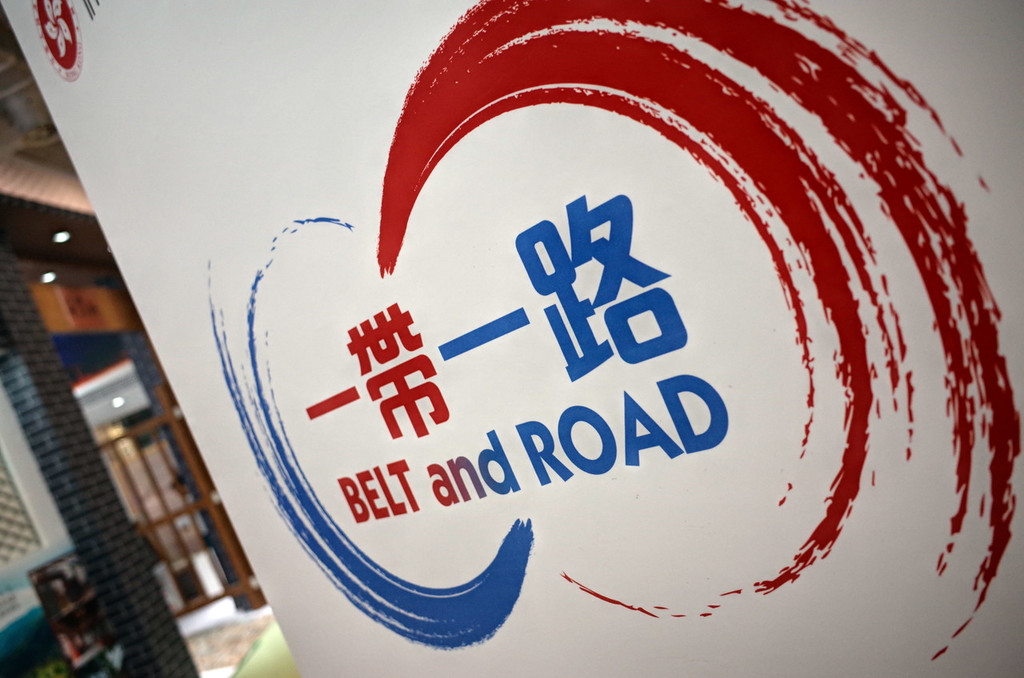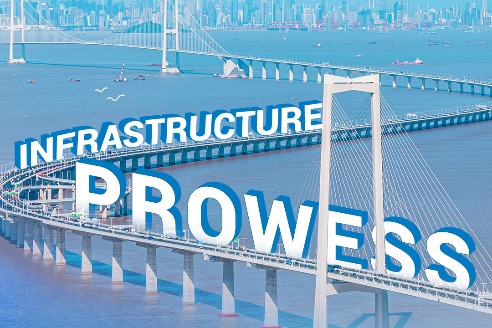BRI not a 'debt trap' but a boost for world economy
By Chen Yingqun | China Daily | Updated: 2019-06-12 10:07

Accusations of China's infrastructure financing 'absolutely wrong', analysts say
Accusations that China's infrastructure financing under the Belt and Road Initiative, or BRI, are causing huge debts to countries involved and pushing them into a "debt trap" are absolutely wrong, reports and analysts have pointed out.
Since last year, some senior officials from the West, including US Vice-President Mike Pence and Secretary of State Mike Pompeo, have made such allegations without offering any evidence. These false allegations have been refuted by a number of global studies and analysts recently.
The Express Tribune, a major daily English-language newspaper based in Pakistan, published an article on May 27, saying the China-Pakistan Economic Corridor, or CPEC, a project under the BRI, is not a "debt trap" but a boon for Pakistan.
It said China is investing $62 billion in Pakistan through the CPEC, which has enabled the country to avert its energy crisis and has helped build an elaborate network of infrastructure in various parts of the country for the past five years. The CPEC has greatly boosted the economic activity and improved people's life, it said.
Despite several hostile voices saying that the project is a "debt trap" for Pakistan and will hurt the country's economy, Noor Ahmed, secretary of the Economic Affairs Division of Pakistan, said that the country's total foreign debt is about $106 billion. Of which Chinese loans account for only 10 to 11 percent, while the remaining are from the International Monetary Fund, Paris Club, and other Western organizations, according to the Express Tribune.
Ahmed said that China has greatly supported Pakistan and always help the country during tough economic crises. Through the CPEC, China is building infrastructure in Pakistan to save its economy, and some of its money coming into Pakistan are purely an investment, some are interest-free loans, and other loans are on very easy and simple terms.
"If China lends money to Pakistan at one of the lowest interest rates in the world, how can it be a debt trap?" Ahmed said.
The Chinese-built Hambantota International Port project in Sri Lanka is another example that is always cited by critics while accusing China of making a "debt trap".
Barry Sautman, a professor in the Division of Social Science at Hong Kong University of Science & Technology, said that alleged story that Sri Lanka's government was forced to sign the port away on a 99-year lease after failing to repay Chinese loans that were racking up 6.3 percent interest "are erroneous".
In a recent article published on The South China Morning Post, he said that China holds an estimated 9 to 15 percent of Sri Lanka's external debt, based on his team's field research in Sri Lanka.
Some of the rest are high-interest loans from commercial banks, which are mainly Western. International sovereign bonds holds about half of its external debt, with "Americans holding two-thirds of their value and Asians only about 8 percent", he said.
Sri Lanka must pay interest averaging 6.3 percent on international sovereign bonds and the principal must be fully repaid, on average, within seven years. In contrast, more than two-thirds of the value of Chinese financing to Sri Lanka from 2001 to 2017, including two-thirds to Hambantota Port, carry only 2 percent interest, and mostly repayable more than 20 years, he said.
"Ironically then, if Sri Lanka is debt distressed, it owes more to American and other Western entities than to Chinese," he said.
He added that in fact, Chinese infrastructure loans have not led to the forfeiture of a single valuable asset abroad and have not impinged on the sovereignty of any country. There is no Chinese plot to take over the world.
A report on a study by New Yorkbased independent research provider Rhodium Group, also dismissed the "debt trap" accusations against China recently. Based on 40 cases of external debt renegotiation between 2007 and this year in 24 countries, the report said asset seizure was a rare occurrence. More often, China was inclined to renegotiate the debts or write them off, it said.
Hisham AbuBakr Metwally, an economics researcher with the Egyptian Ministry of Foreign Trade and Industry, said that critics always mention "debt trap" in African countries, including Kenya and Ethiopia. The fact is that these countries was in keen need of developing infrastructure, such as railways and bridges, which could greatly boost their economic development.
"BRI is really a new hope for the world to overcome the barrier and achieve development for all," he said. "For example, with the development of infrastructure, we can see now Ethiopia grows the fastest in Africa, at about 7 percent annual growth of GDP."
A recent report from global trade credit insurance company Euler Hermes said that merchandise trade between China and countries involved in the BRI will add $117 billion to global trade and boost its growth by 0.3 percent this year. It would also add 0.1 percent to global GDP in 2019.
Abdallah Abdillahi Miguil, Djibouti's ambassador to China, said that unlike the Western investment with strings attached to it, Chinese investment is welcomed by the country in the Horn of Africa.
"The people and the government of Djibouti are aware of the fact that Chinese investment came at a time where it was mostly needed," he said. "In this connection, we do care less what those who envy the growing cooperation between Djibouti and China say."
Xu Haoliang, assistant secretary-general of the United Nations, said the BRI is a global initiative that has the potential to facilitate the achievement of the sustainable development goals. Importantly, it can also fill in the financing gaps and development needs in underinvested countries with loans and investment from China and other countries.
He said that although some countries have expressed concerns on the issues of standards and regulations pertaining to transparency, debt sustainability, the environment and society, these issues are complex and go beyond the BRI.
"They represent systemic issues in some developing countries related to investments and economic management, are not necessarily or only as a result of the BRI," he said. "Careful study is needed to understand the situation in every instance."
























